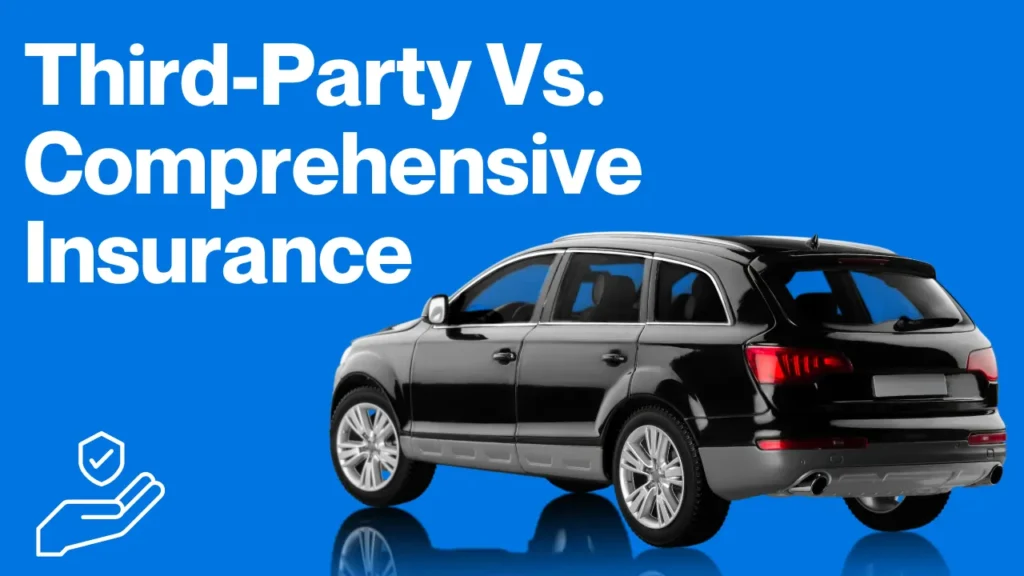Understanding car cover can feel complicated, especially when two simple words, third party and comprehensive, seem to promise very different outcomes. Many motorists focus on price without fully grasping the practical implications of liability, exclusions and claim handling.
This article will explain what distinguishes the two approaches, why the third-party vs comprehensive debate misses key trade-offs, and how to read policy terms for meaningful protection.

What Third-party Insurance Actually Covers
Third-party insurance meets the legal minimum for motor cover: it protects against liabilities arising from injury to others or damage to their property. It, however, does not pay for repairs to the insured vehicle.
For drivers seeking the lowest immediate premium, third party insurance remains the cost-effective option in the short term. That simplicity, though, brings trade-offs when an incident affects the insured vehicle.
Why Comprehensive Policies Appear More Robust?
Comprehensive policies bundle third-party liability with protection for own-damage events and often include a selection of add-ons. This broader scope reduces the chance of facing uninsured repair bills.
However, the wording varies by insurer: limits, deductibles, and sub-limits affect the practical value of the cover. A careful reading of the policy doc is essential.
The Middle Ground: Most Drivers Undervalue
Instead of making the decision dichotomously, think about the possibility of a hybrid or a custom-made policy that would be more aligned with the real needs. Additional features like voluntary deductibles, customised add-ons, and specific limits can provide viable coverage without excessive premiums. The comparison of these options should be based on similar features and not on headlines.
Accident Liability Cover: What to Look For
The phrase accident liability cover refers to the protections that meet third-party obligations and any additional liability extensions. Check whether the policy covers legal defence costs, occupant liability or third-party medical expenses. These components can substantially alter the financial outcome of an incident involving other parties.
Common Pitfalls: Personal Damage Exclusion, and You
Policies sometimes include clauses that limit payment for certain physical losses; a personal damage exclusion, for example, may exclude claims arising from specific scenarios or components. Identifying such exclusions early helps avoid unexpected denials during claims. Always compare exclusion clauses across competing policies.
Shopping Smart with Car Insurance Online
Comparing options using car insurance online tools accelerates the process but does not remove the need for scrutiny. Use reputable comparison portals to shortlist policies, then review the full policy documents for exclusions, deductibles, and the precise wording of the accident liability cover. Online purchase convenience must be matched by document diligence.
Renewal Strategy: When to Retain or Change Cover
A renewal review should consider vehicle age, intended ownership horizon and recent usage. Older cars often justify a leaner plan, whereas a newer vehicle may warrant broader protection. Reducing cover solely on price can erode long-term value, particularly if personal damage exclusion clauses apply to components that are expensive to repair.
Add-ons That Make a Difference
Certain add-ons bridge the practical gap between minimal and full cover:
- Legal liability extensions for third parties.
- Windscreen and consumables cover to avoid small, frequent claims.
- Roadside assistance for breakdown protection.
- Choose add-ons that target the most probable exposures rather than opting for a blanket upgrade.
How to Compare Quotes Effectively
When comparing quotes, normalise the variables: equal IDV or deducted sums, identical voluntary excess, and the same add-on selection. A headline low car insurance price can be misleading if the policy compensates with higher deductibles or personal damage exclusions. Prioritise the total cost of ownership over the lowest renewal figure.
Buying Online Without Losing Clarity
Purchasing cover through car insurance online platforms is efficient, but maintain the habit of saving policy PDFs and noting the claim helplines. Confirm whether accidental or third-party liabilities are capped, and verify that the chosen policy does not quietly apply a restrictive personal damage exclusion in common scenarios.
When Third-party vs Comprehensive Really Matters
The debate becomes decisive when the insured faces a substantial repair or legal claim. If the priority is strict compliance with statutory requirements and premium minimisation, third-party cover suffices. If protection against repair costs and peace of mind are priorities, comprehensive insurance delivers broader cover, provided the policy wording supports that promise.
Practical Checklist Before Purchase
Here is the practical checklist:
- Confirm the scope of accident liability cover and any legal cost provisions.
- Read exclusions for personal damage exclusion clauses and component limits.
- Compare the total renewal cost, not only the car insurance price.
- Use car insurance online tools to shortlist, then verify full policy wording before purchase.
- Assess whether selected add-ons align with likely risks.
Final Thought
The choice between third-party and comprehensive protection is not so much about the label selected as about aligning cover to exposure. Learning about the liability coverage for accidents, how to identify the personal injury exclusion terms, and the smart use of car insurance comparison websites would make the decision more informed. The focus should be on the transparency of protection, not just the premium.






